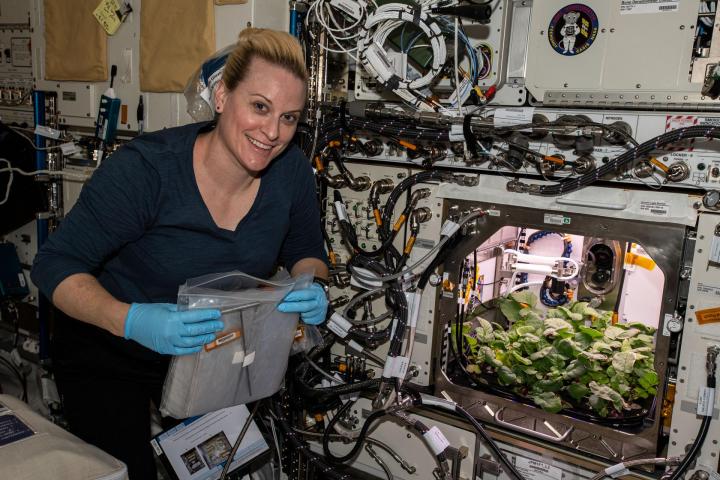
In a step forward toward true space foods, radishes have been grown and harvested on the International Space Station (ISS) for the first time. NASA astronaut Kate Rubins harvested the cosmic crop of 20 radishes from the station’s Advanced Plant Habitat (APH), before wrapping them up in little foil blankets to return them to Earth for study.
Researchers have been working on growing crops in space for some time, as fresh greens and vegetables provide valuable nutrition in astronauts’ diets as well as providing some much-needed variety and freshness in their food, which contributes to their mental well-being. Previous experiments in growing crops in space include lettuce and chili peppers, though growing anything is challenging as plants can behave strangely in microgravity. That’s why the harvesting of these radishes is such a big accomplishment.
“Radishes are a different kind of crop compared to leafy greens that astronauts previously grew on the space station, or dwarf wheat which was the first crop grown in the APH,” explained Nicole Dufour, NASA APH program manager at Kennedy Space Center, in a statement. “Growing a range of crops helps us determine which plants thrive in microgravity and offer the best variety and nutritional balance for astronauts on long-duration missions.”
Radishes are also a good tool for study as they grow quickly, coming to maturity in only 27 days. This crop was grown in a carefully controlled environment, using a careful blend of different minerals and LED lights to give them food and light to thrive. Their growth was recorded by a control camera and 180 different sensors so their progress could be checked at every stage of life, and so factors like temperature, humidity, and carbon dioxide levels could be regulated.
The harvesting of this little radish crop doesn’t spell the end of the radish-related experiments on the ISS though. A second crop will be grown from a new set of radish seeds.
“The APH has two science carriers, so shortly after the first harvest, the second carrier will be used to repeat the experiment by planting another set of radish seeds,” Dufour said. “Replicating the plant experiment increases the sample size and improves scientific accuracy.”



